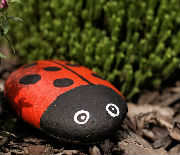
A single moth may appear harmless at first, but 20+ can easily lead to a destructive clothes moth problem. That said, whenever you spot the early signs of a moth infestation, you must act quickly.
But how does one deal with a whole moth invasion? Well, we are here to tell you! In this article, you are going to find helpful tips on how to get rid of clothes moths, prevention tips, and more.
So, keep reading
Table of Contents
What do clothes moths look like?
Tineola bisselliella, known as the common cloth moth or webbing cloth moth, is notorious for causing holes in fabrics. This moth damages clothing, carpets, and various home textiles, as it feeds on natural materials like wool, cashmere, soft leather, fur, etc.
Adult moths are characterised by their reddish-haired heads and golden wings, which are held back behind their bodies. Both the forewings and hindwings have a fringe of hair along their edges, and their wingspan ranges from 12 to 17 mm.
These moths prefer dark and undisturbed environments, making attics, basements, hidden drawers, wardrobes, and other shadowy spaces ideal places to find them. They tend to avoid bright light and often hide in folds, crevices, corners, and cracks.
Check also: How Long Do Butterflies and Moths Live?
The signs of a moth Infestation
The obvious sign of a moth infestation is the damage it causes to clothing, fabrics, and carpets, but there are other indicators, including the following:
- Small maggot-like larvae;
- Tubes or ‘cases’ made of silk that the moth larvae live in;
- Tunnels, trenches or silk furrows wool clothing.
- A pupa (silk cocoon) that develops into an adult moth;
- Actual moths;
- Excessive fur shedding
- Crusty residues on carpets, curtains, and garments Holes in packaged food.
Caution: Pantry moths cause severe damage to stored food. Any item that looks contaminated should be discarded immediately. You shouldn’t consume any type of food touched by the insects – it’s very unsafe.
Check also: Signs of Pest Infestation and What to Do
How to get rid of moths in wardrobe
Get rid of infested items
If the clothing is severely damaged, it may not be possible to repair it. While it can be difficult to part with something you cherish, the benefits of eliminating the moth infestation will far outweigh the temporary loss of the garment.
You will appreciate the cleanliness and comfort of your space even more, knowing that you have taken the necessary steps to protect it from further damage and ensure a pest-free environment.
Clean your clothes thoroughly
Ensure that the garments are thoroughly cleaned. Dry cleaning is the most effective way to eliminate moth larvae, making it a worthwhile investment for wool sweaters and jackets that you wish to protect. Alternatively, you can wash clothes in hot water.
However, it is essential to check the labels, as many wool fabrics may shrink or felt when exposed to high temperatures. If your dryer has a non-agitating shelf or rack, this can serve as a suitable option for eliminating moth larvae from woollen items.
Clean your wardrobe
Moths and their larvae thrive in dark corners and hidden spaces, which is why you should vacuum your wardrobe thoroughly. After vacuuming, promptly remove the vacuum bag and dispose of it outside, as it may contain moth eggs and larvae.
Scrub everything with a kitchen sponge dipped in a cleaning solution. Using rubbing alcohol or vinegar will work as well as a solution of water and dish soap. Make sure to pay extra attention to any cracks or crevices on the inside, especially the corners. Additionally, you might use a carpet steamer for deep cleaning of natural fibre rugs.
Freeze moth-infested items
Freezing can be an effective method to get rid of moths but it requires a sudden drop in temperature. Place your clothing in ziplock bags and put them in the freezer for 48 hours, as the extremely low temperatures will eliminate any hidden larvae or eggs.
Are you dealing with a pest infestation?
You don't have to be alone in the battle against pests. Hire a professional pest expert!
Call usHow to get rid of clothes moths naturally
Mothballs, which contain toxic chemicals, can be as unpleasant as a moth infestation. To save you the nasty, toxic smell, we’ve provided you with natural alternatives you can use to keep your woollens and other clothing free from harmful pests:
Lavender
Although lavender smells lovely to us, it’s extremely unpleasant in the eyes of moths and other insects. To use lavender as a DIY moth repellent, dip cotton balls in lavender essential oil or fill a couple of sachets with dried lavender. Place them in your closets, drawers, and boxes with off-season items. It’s best to replace the batches once the scent fades.
Lavender oil can also be used to protect cotton or linen cloths. Note that essential oils can stain your clothing, so hang items that are infused with oil near your clothes – don’t apply the product directly to them.
Mint
Another effective moth repellent is mint leaves. A handful of dried peppermint can be stuffed in a sachet, or loose leaves can be placed between your clothing. You can also use peppermint oil. A few drops on a cotton ball are all you need, and you can stash them in the corner of your closet.
As soon as the smell starts to wear off, add more peppermint oil. Additionally, you can use mint to keep mice away as well.
Cedar
The moth-repellent properties of cedarwood are well-known, and that shouldn’t be a surprise – cedar just works against flying insects. Consider taking advantage of cedar-lined closets or chests. As an alternative, you can buy cedar chips or blocks and place them wherever needed. Cedar drawer liners and cedar rings that fit over hangers are also available.
Check also: What Damage Do Moths Cause
How to prevent a moth infestation
After you have successfully exterminated clothes moths, it is essential to prevent future infestation from appearing. Here is what you need to do:
Make sure to wash and dry your clothes properly
You should ensure that your clothes are thoroughly cleaned and completely dried before storing them. The scent of detergent and perfume can attract moths. By taking the time to correctly wash your clothes, you will also get rid of any potentially existing moth eggs. In addition, cotton garments can also be ironed as a prevention measure.
Store your clothes correctly
Clothes should be stored in sealed containers, such as chests, plastic storage containers, suitcases, etc., where moths cannot enter. Everything that is made from a delicate material or doesn’t get worn often should be correctly stored to keep moths away.
Wool coats and suits should be zipped inside garment bags. When zipping up, make sure that the clothes are thoroughly cleaned. On that note, wool socks shouldn’t be kept in your sock drawer during the warmer months.
Clothing should be stored in a dry place in your home, as moths prefer moist conditions. Household fabric items should be stored in the attic or under the bed instead of in the basement or garage.
Vacuum regularly
Moths are attracted to dirt in carpets and baseboards, so vacuum them regularly. To ensure you’re removing larvae from your home, if you’re dealing with a moth infestation, change your vacuum bag or filter frequently.
Things NOT to do when you have moths
Do not use pesticides or products for moth treatment without checking their toxic properties. Treatments with an untested pesticide can make an infestation worse. Also, if these are transferred to your skin through your clothes or bedding, they can be harmful. The majority of types of pets are negatively affected by them as well.
Check also: How to Get Rid of Pantry Pest and Prevent Infestation
If worse comes to worst…
… you may want to consider seeking professional pest control services. There are times when removal and prevention are just not enough. With this being said, we at Fantastic Pest Control offer expert moth control solutions that will have the flying insects out of your property in no time.
The service is performed by experienced technicians who work with special products and equipment, is really easy to schedule, and the best part – it’s both effective and affordable. Make a service appointment with us now!
Are you dealing with a pest infestation?
You don't have to be alone in the battle against pests. Hire a professional pest expert!
Call usTakeaways
- The common clothes moth is the most prevalent moth in the UK;
- There are various methods to get rid of moths depending on where they are located in your house;
- To prevent a moth infestation, make sure that you keep your house and clothing as clean as possible;
- You should throw out infested food because it isn’t safe for consumption;
- Never use pesticides or products intended for moth control without reading their label.










Leave a Reply